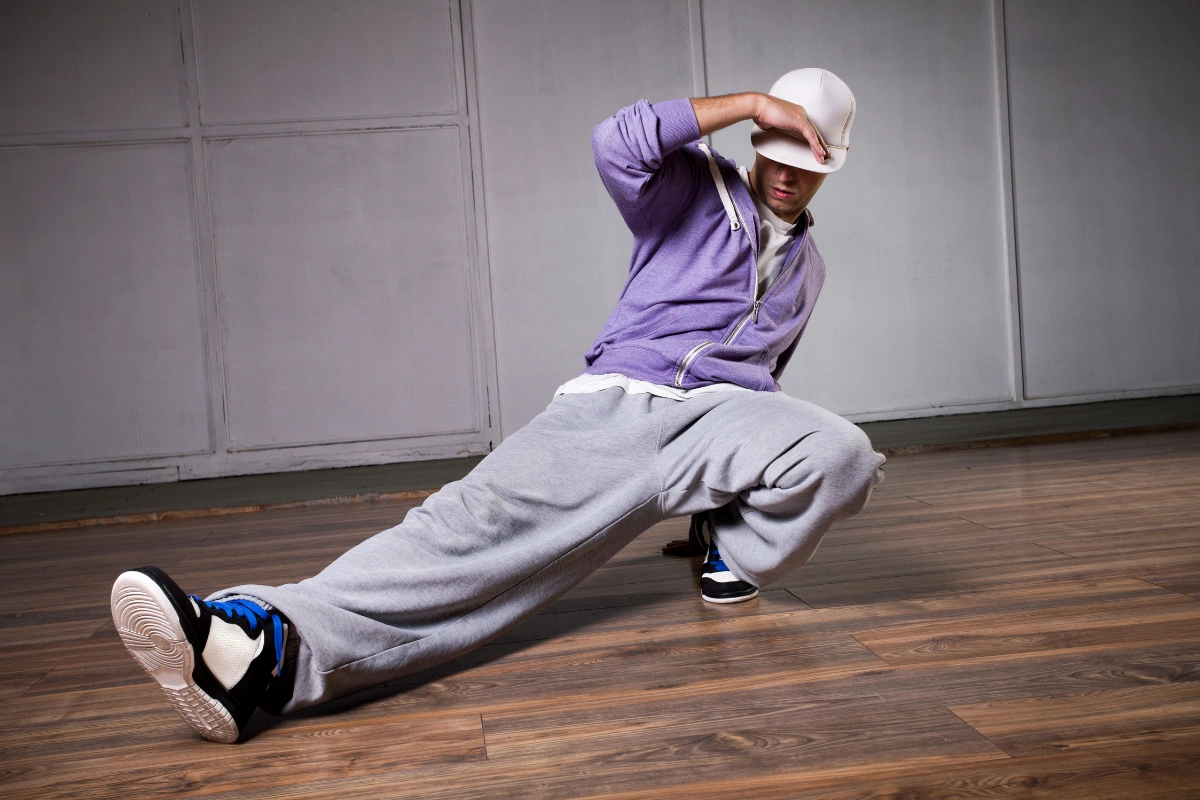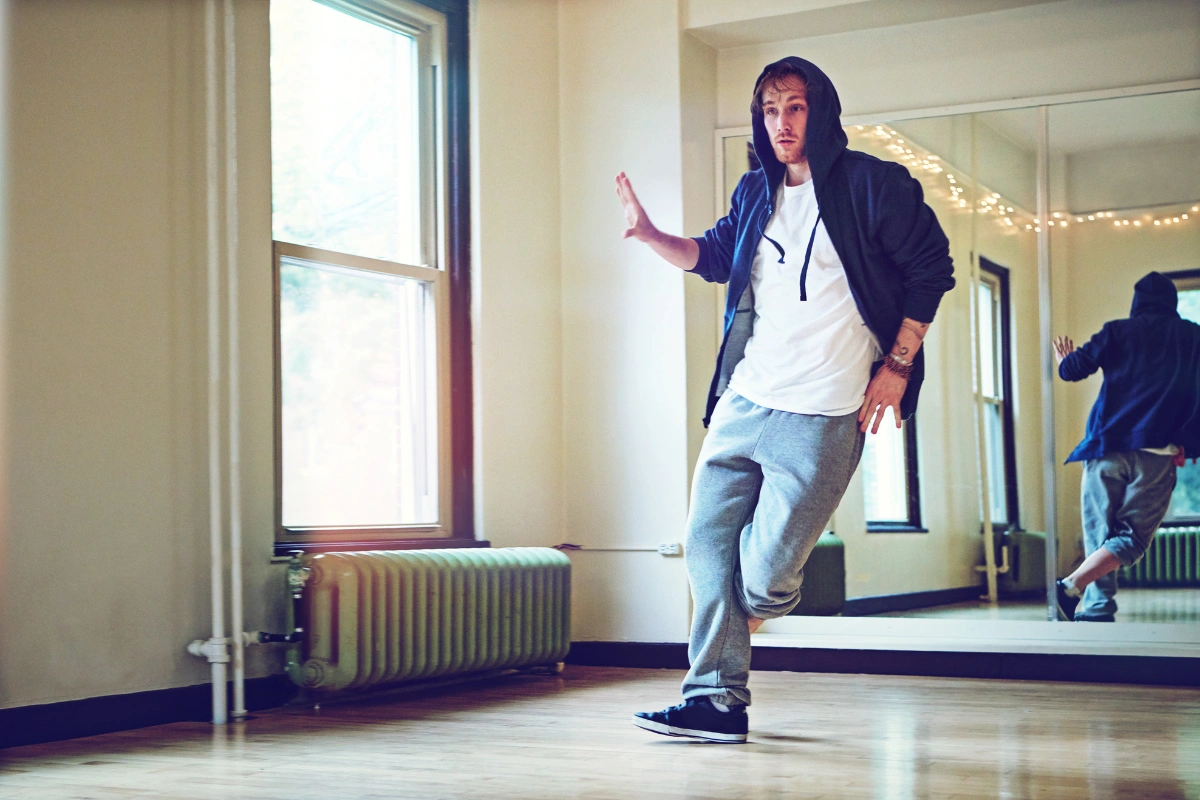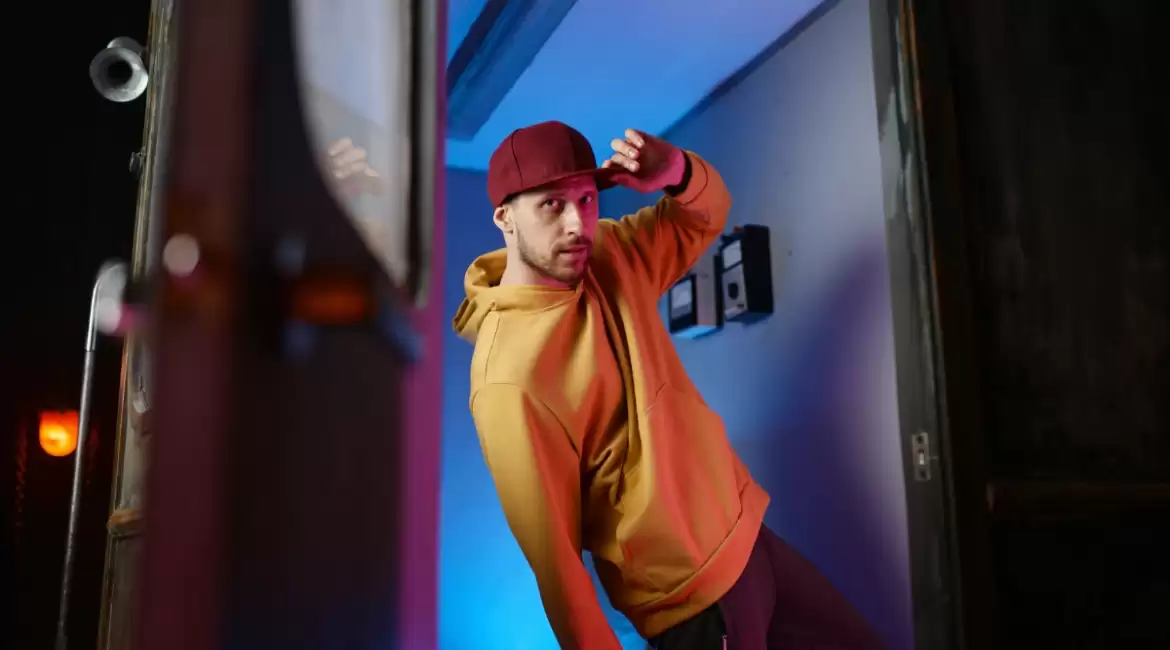In this guide, we delve into the essence of the 2000s move, offering insights and techniques for both beginners and experienced dancers. Join us as we unravel its history, dissect its execution, and empower you to master this iconic breakdancing maneuver.
What is the 2000s Move?
Are you curious about the iconic dance move of the 2000s era? Perhaps you’ve come across it under various names such as the Millennium or the 2K. They all refer to the same electrifying maneuver.
Much like mastering the mechanics of a windmill or delving into the intricacies of a flare, it’s essential to first understand the essence of this move before embarking on the journey of perfecting it. At its core, the 2000 entails executing a spinning handstand.
While maintaining a handstand position may seem daunting, the 2000 is actually more manageable compared to its predecessor, the 1990. Unlike the 1990, which relies on balancing with just one hand, breakers executing the 2000 stack one hand atop the other, enabling them to utilize both hands for stability. Undoubtedly, having two hands in play enhances control and precision.
Moreover, adept breakdancers leverage rapid angular acceleration to elevate the visual impact of this move. It begins with the legs spread wide apart, swiftly transitioning to a close snap as the spin commences.

How Do Breakers Transition Into 2000s?
Transitioning into the 2000s move requires a strategic integration of foundational breaking techniques into one’s routine. By mastering these foundational elements, dancers unlock the gateway to seamlessly incorporating the mesmerizing 2000s move into their repertoire, adding a touch of flair and complexity to their performances.
To embark on this journey, it’s imperative to lay a solid groundwork by honing skills such as footwork essentials and understanding the perfect practice formula. These foundational aspects serve as the building blocks for executing advanced maneuvers like the 2000s move. Without a firm grasp of these basics, attempting the 2000s move prematurely can lead to compromised execution and potential injury.
In the early days of breakdancing, transition into the 2000s move often involved employing techniques such as swipes, power starts, and six-steps. These maneuvers provided breakers with the momentum and positioning necessary to seamlessly flow into the spinning handstand characteristic of the 2000s move. Conversely, transitioning out of the 2000s move typically involved executing a back freeze or returning to the standard standing b-boy stance, maintaining the fluidity of the performance.
However, the repertoire of transitions extends beyond these traditional techniques. Breakers can also incorporate advanced moves like headspins, backspins, hollowbacks, and flares into their routines, elevating the creativity and dynamism of their performances. Ultimately, the only limit to transitioning into the 2000s move is one’s imagination, encouraging dancers to explore innovative and unconventional transitions that showcase their unique style and artistic vision.
The History of the 2000s Breakdance Move
The origins of the 2000s breakdance move trace back to the evolution of b-boying culture, emerging as a natural progression from its predecessor, the iconic 1990 move. However, unlike the 1990 move, the precise origins of the 2000s move remain shrouded in mystery, with no definitive attribution to its inventor. Nonetheless, one prominent figure in the b-boying community, b-boy Crazy Legs, played a pivotal role in popularizing and elevating the 2000s move to prominence.
The nomenclature of the 2000s move reflects its futuristic aesthetic, symbolizing the dawn of a new era within the realm of breaking. This name mirrors the trend observed with the 1990 move, signifying the ongoing evolution and innovation within breakdance culture. Despite the lack of clarity regarding the originator of the term “2000s,” it has garnered global recognition and acceptance within the breakdancing community, cementing its status as a cornerstone move in the b-boy lexicon.
Similar to its predecessor, the 2000s move has transcended its initial novelty to become a staple power move in contemporary b-boying routines. Elite b-boys showcase their mastery by seamlessly chaining spins and incorporating other power moves into intricate sequences, demonstrating the fluidity and dynamism inherent in this art form. As the legacy of the 2000s move continues to evolve, it serves as a testament to the enduring creativity and innovation within the vibrant world of breakdancing.

How to Do 2000s for BeginnersS
tep One – Begin with Hand Placement
For beginners looking to master the art of the 2000s move, establishing a strong foundation is essential. Follow these detailed steps to initiate your journey into executing this dynamic maneuver:
Step One – Master Hand Placement: Embarking on the quest for mastery in breakdancing often begins with revisiting the fundamentals. To lay the groundwork for the 2000s move, start by assuming the squat position and focus on refining your hand placement technique.
The key to unlocking the secrets of the 2000s lies in mastering the optimal hand positioning. Ensure that your right hand is placed strategically on the ground, with the bottom corner of your palm serving as the focal point for spinning. Spread your fingers wide to enhance stability and balance, ensuring that your hand remains as close to your body as possible.
Next, position your other hand atop the first, aiming to distribute the weight evenly to the designated spinning point. Concentrate on maintaining equilibrium and stability as you prepare to initiate the spinning motion.
By meticulously honing your hand placement skills, you set the stage for seamless execution and pave the way for progress in mastering the exhilarating 2000s move.
Step Two – Prepare for Your Power Kick
Transitioning from your starting position to airborne requires finesse and control, primarily reliant on the execution of your power kick. Before delving into the intricacies of this pivotal movement, it’s crucial to equip yourself with appropriate footwear designed for breaking to mitigate the risk of slipping on the floor surface.
The effectiveness of your power kick hinges on the force generated behind it. Channeling maximum power into your kick is paramount, as it serves as the catalyst for generating the momentum necessary for a seamless spin. However, it’s essential to strike a delicate balance between power and control, particularly during the initial stages of practice.
For optimal results, aim to execute a power kick at a measured pace, ranging from slow to medium speed. The objective of this drill is not to prioritize speed but rather to focus on precision and technique. Concentrate on achieving a single 360-degree revolution with each kick, emphasizing quality over quantity.
By prioritizing controlled and deliberate movements during your power kick, you lay the groundwork for mastering the 2000s move with finesse and confidence. Remember, progress is achieved through patience and persistence, so embrace each practice session as an opportunity for growth and refinement.

Step Three – Kick and Tuck
As you propel yourself into the air with the force of your power kick, the focus shifts entirely to the hand tasked with maintaining balance.
Before advancing to subsequent stages, devote time to refining the alignment of your head. It’s imperative to ensure that your head is tucked in slightly and positioned parallel to your arms. This precise positioning facilitates optimal balance and stability, laying the foundation for seamless execution.
When executed correctly, your entire body should ascend vertically, maintaining a straight and upright posture. Emphasize precision and attention to detail during this crucial phase, as mastering the art of alignment is essential for achieving fluidity and grace in your movements.
Step Four – Practice the Spin
Once you have established confidence in mastering the preceding steps, it’s time to elevate your practice by intensifying the power behind your kick. Increasing the force behind your kick serves to amplify the momentum, propelling you into the exhilarating spin.
Embarking on the spinning phase represents a pivotal juncture in the execution of the 2000s move. This phase often presents challenges for many practitioners, as it necessitates the seamless integration of all preceding steps into one cohesive motion.
To execute the spin effectively, it’s imperative to synchronize the actions of your power kick, hand placement, and body alignment seamlessly. Strive to transform these individual components into a fluid and continuous sequence, characterized by a harmonious flow of movement.
Achieving mastery in the spinning phase requires dedicated practice and unwavering focus. Embrace the journey with patience and perseverance, recognizing that each repetition brings you closer to attaining proficiency. Remember, mastery is forged through repetition and refinement, so embrace the process wholeheartedly as you strive to perfect the art of the 2000s move.
Step Five – Complete and Transition
Elevating your skills as a b-boy entails relentless practice and dedication. Upon successfully executing a full 360-degree revolution, you unlock the opportunity to explore advanced techniques or seamlessly transition into complementary moves.
Upon completing the spin, it’s essential to focus on executing a stylish and controlled landing. To achieve this, fixate your gaze on a specific point on the ground, serving as your visual anchor. As you descend, maintain a slight bend in your knees to absorb the impact gradually and ensure a smooth transition from mid-air to ground.
With your feet firmly planted on the ground, remain poised and attentive, ready to seamlessly transition into your next move. Whether it’s chaining together additional spins to amplify momentum or seamlessly transitioning into a different sequence of movements, the key lies in maintaining fluidity and rhythm throughout your set.
Embrace the creative freedom afforded by this transitional phase, allowing your intuition and artistic flair to guide your next course of action. Remember, each movement is an opportunity for self-expression and innovation, contributing to your evolution as a versatile and dynamic b-boy. Embrace the journey with enthusiasm and determination, knowing that every practice session brings you one step closer to mastering the art of breakdancing.
Summary
“Unlocking The 2000s Breakdance Move” offers a comprehensive exploration of one of the most iconic maneuvers in breakdancing. From its origins to its execution, this guide provides valuable insights and practical techniques for dancers of all levels. Through a detailed examination of history, technique, and evolution, readers are equipped with the knowledge and skills necessary to master the 2000s move. Whether you’re a beginner taking your first steps or an experienced practitioner seeking to refine your skills, this guide serves as an invaluable resource for unlocking the secrets of this dynamic and electrifying maneuver.


Leave a reply